Every team has ifs at the start of a season. The upcoming season for the San Jose Sharks has a lot of ifs. More ifs than most teams.
If there is one thing that is clear, the Sharks management wants this year’s team to be a strong Stanley Cup contender. A return to the playoffs is not the expectation. A return to the playoffs and a deep playoff run is. Winning at least two series in the postseason is probably where the bar is set. This team is spending close to the cap. Management stepped out of character to make two very big free agent acquisitions. Plus they traded a 1st round draft pick. Most of this was done to achieve short-term goals. The window of opportunity is a small one with this roster, as the Sharks will have 30% of their payroll age 35 or over come playoff time. That 30% of the payroll is signed to deals that go for at least two seasons.
I’ll start with two points. First, every team has the same if: if we can stay healthy. Unless a specific player is a known injury risk, that is the same issue for every team, so I’ll leave it (mostly) alone.
Second, there are players and things that are not ifs. The Sharks have some of these players. Logan Couture, Joe Pavelski and Marc-Edouard Vlasic are tops on that list. In fact, they are most of the list. I can count on Ben Smith being tough and effective on a lower line and I can count on Mike Brown to be tough and ineffective in the games head coach Peter DeBoer chooses to plays him. The team’s power play is on solid footing and everyone on the primary unit returns. I’d also count on success in the face-off circle. The Shark Tank has been a good venue to the home team, and that also is pretty solid, though it did take a hit last season. Beyond this, however, the Sharks are littered with ifs. They’ll need positive answers to most of these ifs to be a legit Stanley Cup contender.
The Old Men and the Ice
The Sharks have four players who will be 35 or older before the next playoffs start in the spring of 2016. At that age, players are always susceptible to a significant drop-off in play from one year to the next. Even if the talent remains, the ability to summon it regularly can be an issue.
These four players are all important to the Sharks success. Recently acquired Joel Ward gives the Sharks depth in their forward lines. Ward can be moved around to be used effectively; it appears he’ll start the season on the second line. Recently acquired Paul Martin is expected to be the defensive anchor paired with Brent Burns, meaning big minutes are likely coming his way. Neither Ward or Martin can afford to wear down.
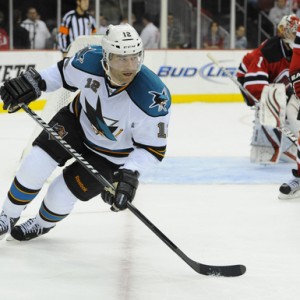
Last year, both Joe Thornton and Patrick Marleau showed signs of slowing down. Marleau has been Mr. October for years. Coming out of the gate quickly, then steadily declining the rest of the season. Last year was only different in degree, it was Marleau’s worst season. He played all 82 game, but finished a -17. A frequent 30 goal scorer, Marleau failed to reach the 20 goal mark. In terms of even strength goal scoring, Marleau finished tied for 133rd among forwards in the league, even though he was 27th in even-strength ice time. Thornton meanwhile started out the season strong. But on the last day of 2014, Thornton was injured in a game against Anaheim. He missed the next four games. Just shy of the season’s midpoint (38 games), Thornton was +5, with 25 even strength points. After the injury, Thornton’s play seem to drop. In the 40 games after the injury, Thornton had 18 even strength points and was -9.
If Marleau can rebound and play at a high level all year and into the postseason.
If Thornton can play at a high level all year and into the postseason.
If both Ward and Martin can play strong all year and into the postseason.
The Young Guns
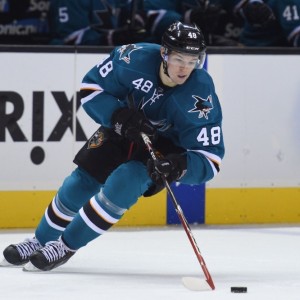
The Sharks have several younger players that have just begun to establish themselves as NHL-level players. Whether they develop, plateau or regress is a big issue. Among them, Tomas Hertl, Chris Tierney and Melker Karlsson. All three have shown promise and have done good things in their time in San Jose. Hertl showed incredible potential and was on his way to a Calder win as the league’s top rookie when he was derailed by a knee injury. Since that injury, roughly 22 months ago, Hertl has not looked nearly as good. He had 15 goals in 35 games prior to the knee injury. Last year, he played all 82 games and had only 13 goals. Chris Tierney struggled early last season and was sent down to the AHL. When he returned to the NHL later in the season, he was much more ready for the NHL game. Tierney was one of the few bright spots for the Sharks in the second half of the year. Tierney is a set-up man more than a goal scorer, which is something the Sharks need, especially with scorers like Logan Couture and Patrick Marleau. The Sharks would be wise to have Tierney on the same line as a top goal scorer, though that doesn’t seem to be the initial plan. His continuing development will be very important to this team, a sophomore slump would be problematic. Melker Karlsson was a pleasant surprise for the Sharks last season. He played well enough to gain a spot on the line with Joe Thornton and Joe Pavelski. Then he played well enough to keep that spot. Karlsson isn’t big, but he plays hard and finds ways to contribute. He is not a top line talent, but he has grit and smarts. He is likely headed to a lower line, meaning he’ll play with less effective players against less effective defenders. Can Karlsson continue to develop his NHL game so he can be an overachiever on a lower line?
If Hertl can bounce back.
If Tierney can continue to progress against tougher competition.
If Karlsson can play effectively on lower lines.
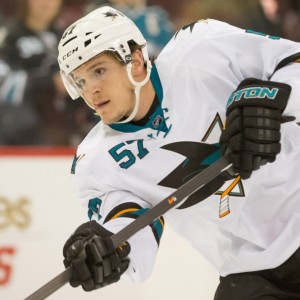
One key forward is Tommy Wingels. Wingels is by far the Sharks most physical player, finishing the season more than twice the number of hits of any other Sharks forward. The issue with Wingels is whether he can hold up over the course of the season. The last two years give an uncomfortable answer: not well enough. Last season, Wingels finished the 2014 portion of the season with 23 points and was +1. In the 2015 portion of the season, he had 13 points and was -8. In the prior season, Wingels had 18 points and was +13 just 1/3 of the way through the season (27 games). The latter 2/3 of the season, 20 points and -2. For a player as physical as he is, Wingels is not particularly big, listed at a modest 6’0″ and 195 lbs. Figuring out how Wingels can maintain his play over the course of the season and into the postseason is an issue.
In an earlier piece, I discussed Matt Nieto and his situation at length. I see Nieto as a bubble player and his career is a big ‘if’. He needs to get better to stay in the line-up. If Nieto can develop his game, he can be a contributor. Barclay Goodrow is another player who showed he could be a contributor at the NHL level, but his game is suited to the bottom of the roster unless he can find something more in terms of productivity or physicality. I like the odds for Goodrow, but it is not a given.
If either Goodrow or Nieto can take a sizable step forward.
If Wingels can stop his declining play late in the season.
Problem or Opportunity?
The Sharks have an aging player, largely absent the past 2 seasons, in Raffi Torres. Torres suffered a torn ACL two years ago. He not been healthy since, though he did play a few games in 2014. He has had two surgeries on the knee, the first one being unsuccessful. Torres will turn 34 right about opening night. Torres is best known for his edgy play, but he is a skilled player. Every season Torres has played 50 or more games, he has scored at least a dozen goals. Easily a top-9 forward, he is capable of playing on top lines. Still, returning to a high-level after a lengthy absence and two major knee surgeries is hardly a given. Torres has also run afoul of the NHL’s Department of Player Safety and will miss the first half of the season (I voiced my opinion on this, the DPS was too kind to Torres). In the big picture, the suspension makes little difference. Torres is probably still at least a few months away from completing his recovery.
If Torres can return to be the player he was by around February.
Defenseman Justin Braun had a very strong season in 2103-14 and found excellent chemistry with the superb Marc-Edouard Vlasic. However in 2014-15, Braun’s game took a step back. He looked especially vulnerable when away from Vlasic, but even when paired with Vlasic, Braun had his issues. Perhaps the most controversial move last season in a year filled with controversial moves was returning Brent Burns to defense. Burns was an offensive tour-de-force and a major liability while trying to defend. Burns went from +26 as a winger in 2013-14 to a -9 as a defenseman in 2014-15. It is likely Burns will improve his defensive game, but the defensive-minded Paul Martin was brought in to save Burns from his defensive liabilities.
If Justin Braun can find the game he had in 2013-14
If Paul Martin can help mitigate the problems Brent Burns presents on defense.

The Sharks will need to roll a 3rd defensive pair. It is an odd situation. The best roster player last year that is a candidate for 3rd pair this year is Matt Tennyson, a right-hander who had 8 points in just 27 games and finished even for the year. But Tennyson is not a lock. However, Brenden Dillon is. Dillon played 60 games (he was traded to the Sharks about 20 games into the year) and had 9 points. His -11 was worst among Sharks defensemen. Dillon got rewarded with a lengthy deal and a major pay raise — based on potential, not performance. The Sharks will need to roll three defense pairs. However, the top two pairs have the potential to be very strong, meaning the third pair may be able to live a more sheltered existence. Still, the third pair must hold its own. Any upside over last year would be very welcome.
If the 3rd defensive pair can hold it own.
And In Goal
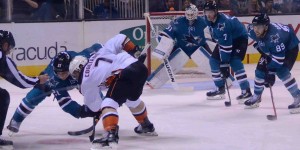
The biggest on-ice question for the Sharks has to be the goalie. Martin Jones came up to the NHL two seasons ago and immediately made an impact. He won his first eight games, giving up just eight goals and posting a save percentage close to .960. In the 26 games since then, Martin’s save percentage has been under .910. The Sharks traded a first round pick to acquire Jones in the offseason and immediately gave him a 3-year contract. He is the presumptive starter and he is unproven. But one shouldn’t ignore back-up goalie Alex Stalock. Stalock had a very strong season two years ago and a very miserable one last year. In what is likely to be a tight playoff race, having a back-up that can deliver effective results in the 25-30 games he’ll appear in will matter.
If Martin Jones can become a quality NHL goalie this year.
If Alex Stalock can play more like the 2013-14 version than the 2014-15 version.
We’re Talking Depth
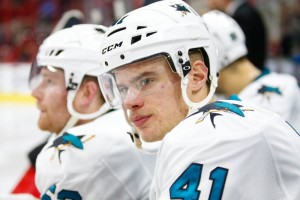
Going over the roster, one thing becomes apparent. The Sharks are not deep in proven NHL talent. The Sharks have 15 forwards with NHL experience, but that includes Raffi Torres whose comeback is questionable. Two others are Mike Brown and Frazer McLaren, who both play the role of fighter and pest, neither is the sort of effective player a team would want out there on a nightly basis. The Sharks blue line includes two of seven players with less than 40 games of NHL experience. Matt Tennyson was discussed earlier. Mirco Mueller played as a rookie last season, but was largely ineffective. Mueller is still just 20-years-old. Whether he is ready for the NHL at some point this season or better served playing nightly in the AHL is unclear. It’s possible that prospect Dylan DeMelo is ready to step into an NHL role.
I mentioned earlier that every team has injury risks. The Sharks are perhaps more vulnerable than most teams, as their depth is unproven. However, this is also an area of opportunity for the Sharks prospects. Whoever is ready when a roster spot opens, even temporarily, will have an opportunity to make a difference. The first prospect to be given that chance appears to be Joonas Donskoi.
If the inexperienced depth is more opportunity than problem.
The Coach
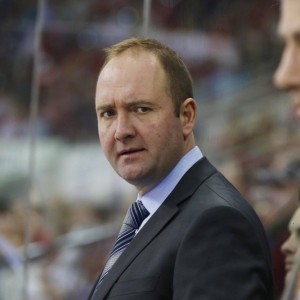
There is one more major piece in all this. The Sharks have a new coach, which means there will be changes in culture, style of play and team dynamics. DeBoer’s ability to manage the roster and develop players are among the challenges he faces. The early returns suggest that DeBoer is largely going with the flow from last year, albeit with a more talented group. His message is similar to that of the prior coach, Todd McLellan. But perhaps a similar message delivered from a new messenger will prove helpful.
If Peter DeBoer can succeed.
For the San Jose Sharks, the number of things that need to go right is daunting. Not every if has to pan out, but most of them do. The odds do not favor this team. In poker, there is a phrase: drawing to an inside straight. The odds of drawing to an inside straight are 4 out of 47. The Sharks need to answer enough of these ifs successfully to be a major factor in the playoffs. 4 out of 47? I’d say their odds are similar.